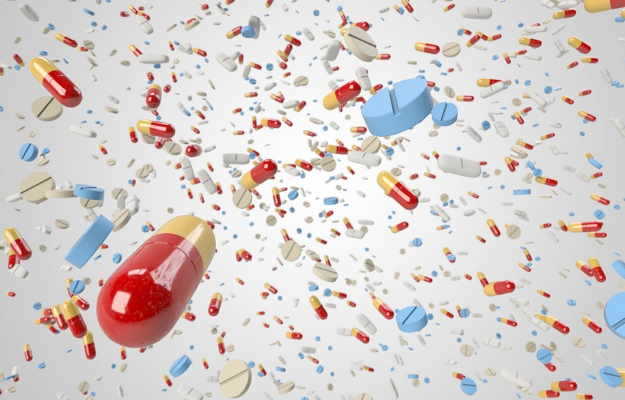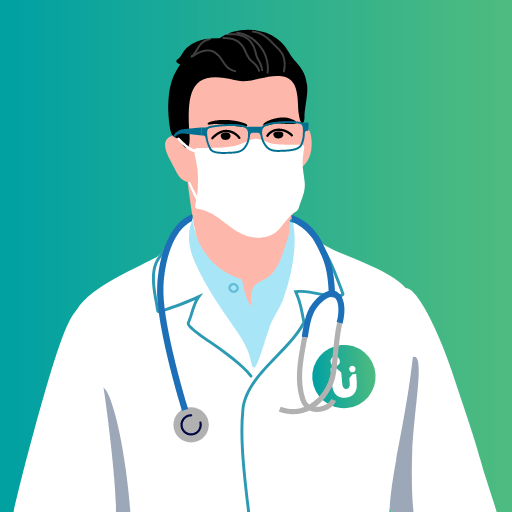Antibiotics are life-saving medicines that fight bacterial infections. They do not have any action against viruses, fungi or other disease-causing organisms. Based on their mechanism of action—that is, how they stop (bacteriostatic) or kill (bactericidal) bacteria—they are classified into different categories. Improper and excessive usage of antibiotics coupled with poor infection prevention practices have caused antibiotic-resistant bacteria to emerge.
How does antibiotic-resistance occur?
Antibiotic resistance can occur:
- When you take the wrong antibiotics
- When you take the wrong dosage of antibiotics
- When you don't complete the antibiotic course
- When you complete the course but don't see your doctor at the end of the prescription period, to check if the infection has cleared or if you need to take the medicines for a little while longer
- When you don't need antibiotics but take them anyway (like for a viral infection)
In many of these situations, the drug-sensitive bacteria are neutralised but those bacteria that resist the drug's action persist, grow and multiply.
Furthermore, the bacteria that survive can transfer this resistant trait to other drug-sensitive bacteria, making them resistant too.
Why is antibiotic-resistance such a big problem?
Antibiotic-resistant bacteria cause infections that are difficult or nearly impossible to treat. Each year, nearly seven lakh people worldwide die of such infections and this number is estimated to reach 10 million by 2050. It is, therefore, important to understand how antibiotic-resistance can be prevented and controlled and what role individuals can play.
Before we go further into antibiotic-resistance and its implications, let's take a quick look through what are antibiotics:
Antimicrobial drugs are medicines that either stop the growth of or kill disease-causing organisms like bacteria, viruses, fungi among others. Antibiotics are that subset of antimicrobials that act specifically on bacteria. These drugs have no action on organisms other than bacteria (like flu causing viruses for which a separate kind of medicine, antivirals, are needed).
Since their discovery in the early twentieth century and first widespread use during the Second World War, antibiotics have revolutionised healthcare. With the advent of the antibiotic era, infectious diseases that earlier nearly always resulted in death have been reduced to few-day long illnesses.
Antibiotics often work by inhibiting the enzymes that bacteria need to grow (bacteriostatic) and survive (bactericidal). Whereas narrow-spectrum antibiotics work on a limited range of bacteria, broad-spectrum ones work on a larger selection of bacteria. Usually, broad-spectrum antibiotics are initiated on clinical suspicion of bacterial infection and are subsequently replaced with bacteria-specific drug after culture and sensitivity studies.
Based on their mechanism of action, antibiotics are grouped under the following classes:
Cell wall synthesis inhibition:
- Beta-lactams: A substance called peptidoglycan which is present in the bacteria’s protective cell wall is prevented from forming adequate bonds (cross-linking) leaving the bacteria incapable of surviving. These bactericidal (bacteria-killing) drugs include penicillins (amoxicillin, ampicillin, piperacillin, etc.), cephalosporins (consists of five generations; ceftriaxone belongs to this sub-class), carbapenems (imipenem, meropenem, etc.) and monobactams (aztreonam). These drugs have a beta-lactam ring structure that confers strength and integrity on them.
- Glycopeptides: Another bactericidal category of drugs that includes the commonly used vancomycin, it stops the synthesis of cell wall peptidoglycan altogether in bacteria.
Protein synthesis inhibition (30S ribosome subunit)
- Aminoglycosides: Drugs like streptomycin, amikacin, gentamicin, neomycin and tobramycin block a portion of the ribosome, preventing bacterial protein production. This has a bactericidal action.
- Tetracyclines: Tetracycline and doxycycline, amongst others, act on a bacterial enzyme and reduce protein manufacturing. These slow down bacterial growth (bacteriostatic).
Protein synthesis inhibition (50S ribosome subunit)
- Macrolides: Erythromycin, clarithromycin and azithromycin bind with a specific site of the ribosome and reduce the creation of new bacterial protein, thereby hampering its growth (bacteriostatic).
- Lincosamides: Clindamycin, by a similar process of protein synthesis inhibition, reduces bacterial proliferation (is bacteriostatic).
DNA gyrase inhibition
- Fluoroquinolones: drugs like ciprofloxacin, ofloxacin and other similar-sounding medicines block the action of a bacterial enzyme called DNA gyrase, which is needed to uncoil DNA before protein synthesis can occur.
Folic acid synthesis reduction/prevention
- Sulphonamides: Trimethoprim and sulphamethoxazole are examples of such drugs and are often given together in combined form, called cotrimoxazole. These too interfere with DNA and affect bacterial survival and replication.










































